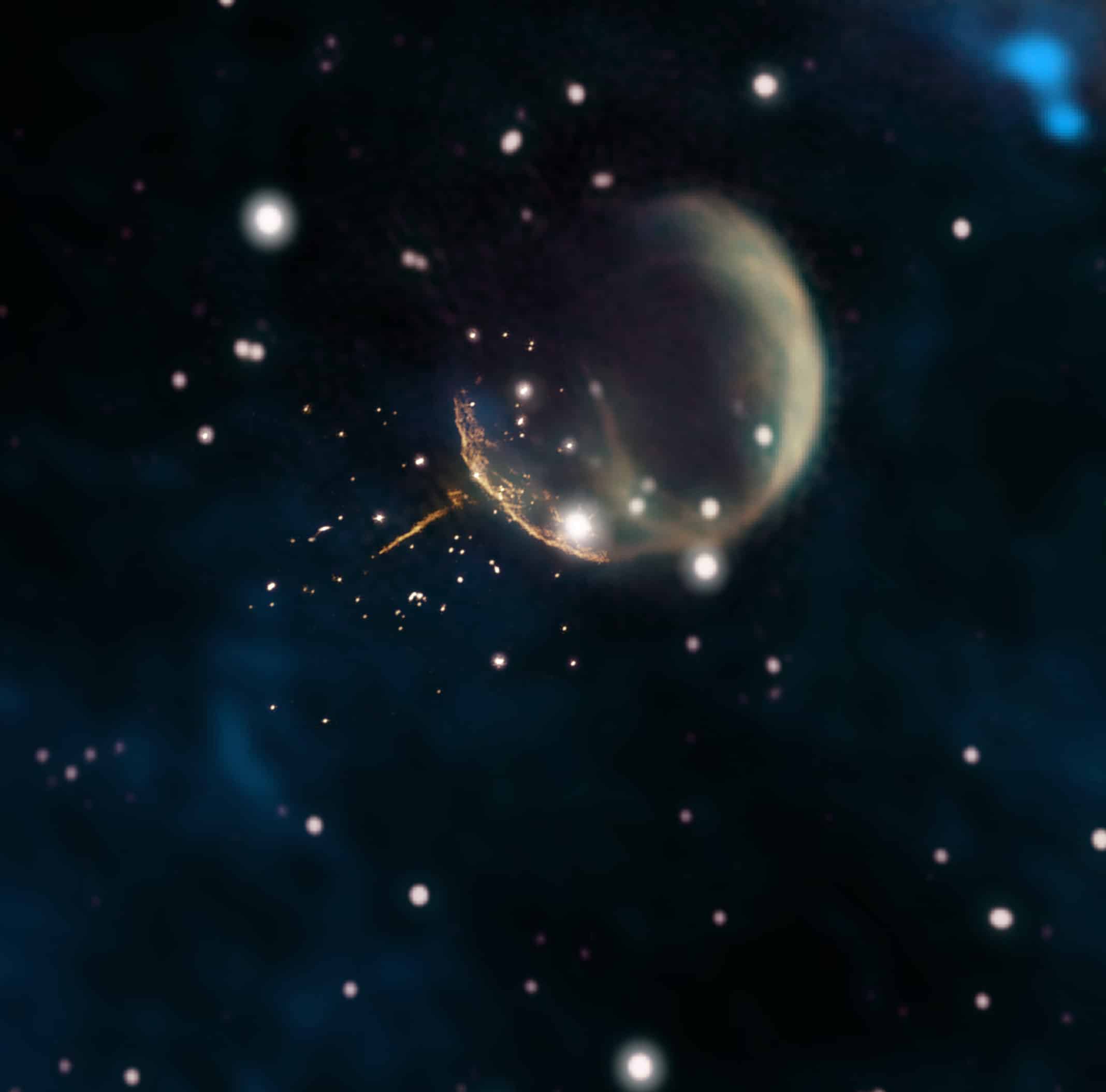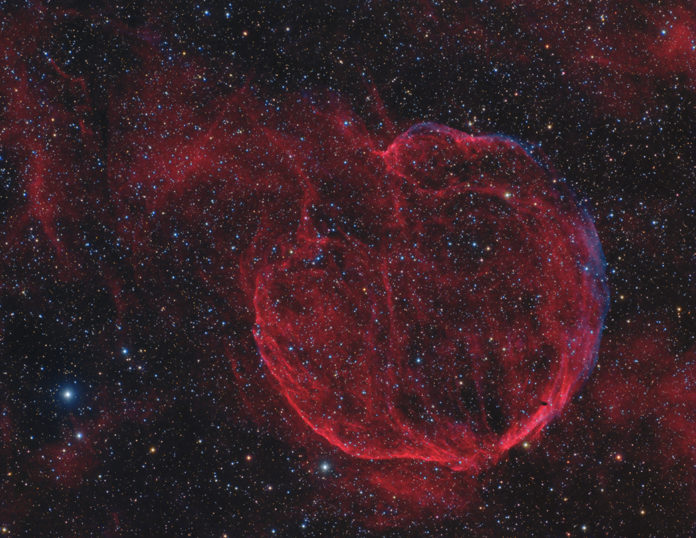A pulsar is a highly magnetized rotating neutron star that emits a beam of electromagnetic radiation. One such pulsar PSR J0002+6216 has a radio-emitting tail is pointing directly at expanding debris from a recent supernova blast.
A recent observation made by NASA’s Fermi Gamma-ray Space Telescope and the National Science Foundation’s Karl G. Jansky Very Large Array (VLA) suggests that the pulsar is traveling through space at nearly 2.5 million miles an hour. It is fast enough that it can travel the distance between the Earth and the Moon within just 6 minutes.
Astronomers spotted this pulsar due to its narrow dart-like tail and a fortuitous viewing angle. They are planning the further exploration of the object to better understand how these explosions are able to ‘kick’ neutron stars to such high speed.
The pulsar J0002 was originally detected in 2017 by a citizen-science project called Einstein@Home using time on the computers of volunteers to process Fermi gamma-ray data. Located about 6,500 light-years away in the constellation Cassiopeia, J0002 spins 8.7 times a second, producing a pulse of gamma rays with each rotation.

Credits: Composite by Jayanne English, University of Manitoba, using data from NRAO/F. Schinzel et al., DRAO/Canadian Galactic Plane Survey and NASA/IRAS
Astronomers used Fermi data and a technique called pulsar timing and quantified the timing and the direction the pulsar is moving across.
Matthew Kerr at the U.S. Naval Research Laboratory in Washington said, “The longer the data set, the more powerful the pulsar timing technique is. Fermi’s lovely 10-year data set is essentially what made this measurement possible.”
“The result supports the idea that the pulsar was kicked into high speed by the supernova responsible for CTB 1, which occurred about 10,000 years ago.”
Exactly how the pulsar was accelerated to such high speed during the supernova explosion remains unclear, and further study of J0002 will help shed light on the process. One possible mechanism involves instabilities in the collapsing star forming a region of dense, slow-moving matter that survives long enough to serve as a “gravitational tugboat,” accelerating the nascent neutron star toward it.
https://youtu.be/5pGXqrovaFo
The team plans additional observations using the VLA, the National Science Foundation’s Very Long Baseline Array (VLBA) and NASA’s Chandra X-ray Observatory.
Frank Schinzel, a scientist at the National Radio Astronomy Observatory (NRAO) in Socorro, New Mexico, together with his colleagues Matthew Kerr at the U.S. Naval Research Laboratory in Washington, and NRAO scientists Dale Frail, Urvashi Rau and Sanjay Bhatnagar presented the discovery at the High Energy Astrophysics Division meeting of the American Astronomical Society in Monterey, California. A paper describing the team’s results has been submitted for publication in a future edition of The Astrophysical Journal Letters.
